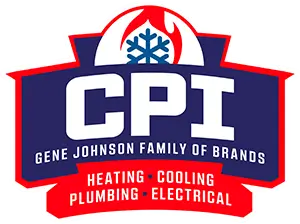How to Turn Off Pilot Light on Your Furnace?
Winter is winding down, and so should your furnace. Turning your furnace off is prudent if you don’t want unnecessary utility bills weighing you down all year long.
Most homeowners wonder why their gas bill doesn’t calm down after turning their furnaces off. It might even reach an all-time high! That’s strange, considering you already shut the biggest consumer down.
However, merely flipping a switch might not be enough! Your furnace may not be completely cycled off through thermostat controls. It’s no wonder why your gas bill is still soaring.
What do you know about that little flame at the tip of your furnace? Is it still burning? Problem solved. Well, one problem, at least. Let’s get to solving it entirely.
Here, you will learn more about the pilot light and how to turn it off.
What is the Pilot Light?
A pilot light is the primary source of ignition. Without a pilot light, your gas furnace may never provide your home with any heat.
It is a small flame that initiates combustion. It burns fuel supply, allowing your furnace to generate heat and alter your home’s indoor temperatures.
The pilot light burns the gas and air intake mixture to distribute heating through your home’s ductwork.
Don’t worry! You won’t inhale the gas unless you have a malfunctioning pilot light.
The pilot light burns all natural gas particles within the mixture. Ignition alters the air supply’s temperature before your furnace releases heated air into your air ducts.
Where is the Pilot Light?
The pilot light is typically found at the tip of your furnace. You might see it through an inspection window or behind an access panel.
Pilot lights are generally accessible to manually toggle on and off. While furnaces are typically configured with automated safety features, burning components sometimes require manual controls.
Whether you need to access it or not, it’s best to know where the pilot light is and how to control it to ensure your safety. You never know when you need to extinguish or reset the flame.
Remember, it’s typically at the front end of your furnace, just before the distribution pipes. You may also see a knob or lever beneath the flame.
Should I Turn OFF the Pilot Light?
You don’t always have to manually turn the pilot light off. However, you should double-check your pilot light when shutting heating systems down for the summer.
Cycling the furnace off requires thorough evaluation. You must ensure all systems are entirely off to avoid costly utility bills and hazardous safety risks.
The pilot light isn’t the only thing you should inspect. Without thorough inspection, you might expose your home to gas leaks.
Gas leaks are multifaceted nightmares! They may spike your gas bills without serving any viable purpose other than driving you nuts.
How is that possible when the pilot light is off?
If the pilot light isn’t completely off, it may trick flame sensors into allowing your furnace to continuously supply gas flow. Ensuring the pilot light is properly turned off can prevent misfires.
You can avoid any miscommunication between various internal components by switching things off manually, including valves facilitating resource flow.
Shouldn’t I just keep the pilot light on to prevent unburnt gas from circulating in my ductwork?
Keeping the furnace on isn’t unusual. Washington summers aren’t exactly scorching. You can keep your entire furnace on if you like things warm and toasty all summer.
However, that’s an inefficient way to avoid gas leaks. You may pay useless utility bills by keeping the furnace on just to avoid gas leaks.
You can save your money and yourself from any additional stress by properly shutting the furnace down. The most efficient way to ensure all systems are off is by starting at the root of the entire combustion process.
“How to Turn OFF a Standing Pilot Light” in 3 Easy Steps!
While you might rely on just unplugging your entire furnace, you must remember to follow up with an inspection if you don’t want inexplicable gas consumption bugging you this summer.
You might find more comprehensive articles telling you sixteen “know-how” tips when you only really need three. There’s no need to overcomplicate things.
There are only three key steps to ensure your pilot light is properly and safely extinguished.
- Step 1: Turn off the furnace.
You may lower temperatures from the thermostat or switch off the entire furnace through your home’s circuit breaker. You may also access a separate electrical breaker on your furnace. There should be an electrical panel on the body of your furnace where you may control its electrical consumption.
- Step 2: Inspect your furnace.
Locate the inspection window or access panel at the front of your furnace. You may see the burner chambers where the pilot light sits. It may already be extinguished at this point. However, whether it is on or off, you should proceed to the next step.
- Step 3: Turn the pilot light off.
There should be a knob somewhere on the burner’s tip. It typically reads “On/Off” and is labeled “PILOT.” Switch the knob to the OFF position to ensure valves and sparkers are closed shut. Remember to switch it back to ON when winter rolls around again.
You don’t need a professional to help you with these steps. Still, expert assistance may help you optimize efficiency and safety. Professionals may also help prolong your equipment’s lifespan and increase efficiency and reliability.
While you should always hire experts to help you with your HVAC systems, it pays to know more about them yourself.
When Should I Turn OFF the Pilot Light?
Ideally, you should turn the pilot light off when you no longer need heating distribution. You only have to manually turn it off when it’s not automatically extinguished.
You don’t have to turn the pilot light off whenever you want to lower temperatures or lessen heat distribution. Furnace systems facilitate various components to meet your desired temperatures, with some toggling the fire instead of the gas flow.
However, there are standing pilot light types that maintain the fire, altering gas flow to regulate temperatures instead. With standing types, you might have to tinker with the pilot light more.
Your older systems may not be as responsive to thermostat controls. You may have to turn your standing pilot light off every now and again with traditional natural gas furnace systems.
You won’t have to manually toggle the pilot light on and off if your old furnace is well-maintained and up to date with its tune-ups.
You can ensure your older furnace systems keep up with your home’s temperature demands with routine maintenance.
Why Does My Furnace Keep Cycling OFF?
Poor maintenance may keep shutting a furnace with standing pilot light systems off. A standing pilot light remains blazing throughout.
Once the standing pilot light is extinguished, the entire heating system may be turned down. Check on your pilot light if your older furnace systems keep cycling off.
Clogs or abrasions on the separate gas line supplying the pilot light might hinder ignition. There may also be residual gas on the burner tip obstructing or suffocating spark plugs.
While it’s easier to pinpoint the problem with standing pilot lights, other types are harder to discern.
Different Types of Pilot Lights
There are two main types of pilot lights:
- The standing pilot light is typical for older furnace systems.
- The intermittent pilot light is a newer integration for more innovative furnace systems.
While the standing pilot light stays burning, intermittent types switch between modes to alter temperatures. They are newer pilot light types integrated into furnaces to increase user safety.
What is an Intermittent Pilot Light?
Intermittent pilot lights switch on and off to regulate temperatures, which isn’t only safer but more efficient! An intermittent pilot light can more accurately conduct heat distribution by consuming less gas and responding more swiftly to thermostat demands.
The newer integration is more dependable thanks to flame sensors with heightened sensitivity. Intermittent pilot lights have safety sensors that are more sensitive than their more-traditional counterparts because they do more than extinguish the flame once.
Intermittent pilot lights have sensitive sensors called thermocouples that may command ignition and suppression. They directly control electric sparkers and the corresponding gas valves.
These sophisticated sensors control the pilot light and gas valves to ensure safety. Intermittent pilot lights were invented in response to problematic standing pilot lights.
Problems With Your Standing Pilot Light?
The most frequently reported furnace issue among residents is erratic pilot lights. Staying on when it’s turned off, going off when it should stay on.
A maintenance visit from professional heating specialists should be enough to do the trick. Cleaning burners, securing supply lines, and unclogging pipes are the easiest ways to ensure reliable pilot lights.
If your pilot light still isn’t responsive, you might need to replace spark plugs or supply lines.
Preventative Maintenance
You must keep up with furnace maintenance to ensure reliable heating all winter. Most contractors recommend pre-season maintenance, but a post-season service is just as important.
Washington has a colder climate than most states. They can cause frost damage to home-heating systems, especially when switched off prematurely after winter.
If you need help to maintain your HVAC systems, opt for reliable services!
Reliable furnace repair and replacement services in Washington are challenging to find. Luckily, some of Washington’s finest HVAC specialists are eager to help you stay warm and cozy.
Furnace systems are potentially volatile and require routine inspection! It would be best to immediately enlist professional assistance to remedy malfunctioning pilot lights and worn-out supply lines.
Call CPI Plumbing, Heating, Cooling & Electrical Now at (360) 219 -9468 for Professional Heating Assistance Today!


